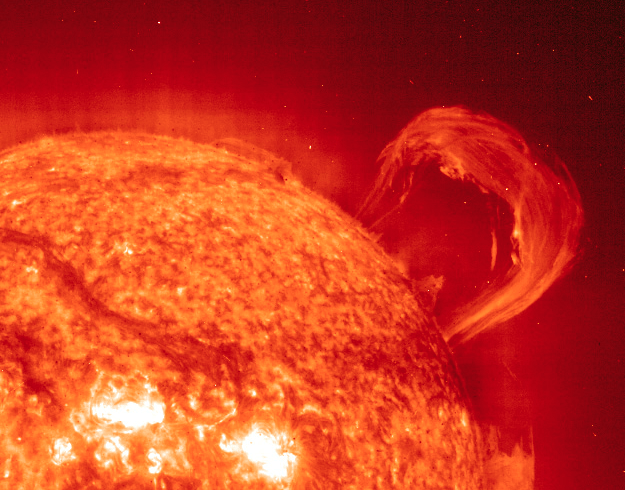Fast radio bursts — eruptions of extreme energy that occur only once and last a thousandth of a second — are continuing to defy astronomers. At first observations suggested they came from billions of light years away. A new study, however, points to sources much closer to home: nearby flaring stars.
“We have argued that fast radio burst sources need not be exotic events at cosmological distances, but rather could be due to extreme magnetic activity in nearby Galactic stars,” said Harvard professor Abraham Loeb in the study.
All radio bursts show a dispersion measure — a frequency dependent time delay — as the long-wavelength component arrives a fraction of a second after the short-wavelength component. When the burst travels through a medium, the long-wavelength component moves slightly slower than short-wavelength component.
This dispersion may easily be created when light travels through intergalactic space. The farther the light travels, the more electrons it will have to travel through, and the greater time delay between the arriving wavelength components.
With this assumption, fast radio bursts are likely to have originated anywhere from five to 10 billion light years away. Universe Today covered an extra-galactic origin a few months ago (read it here).
However, Loeb and his colleagues turned their eyes instead to electrons in stellar corona. These electrons are tightly packed, more so than diffuse intergalactic electrons, and would create the same observable effect.
Flaring stars — variable stars that can undergo unpredictable increases in brightness — are a likely source of fast radio bursts. Two circumstances may create flaring stars: young, low mass stars and solar-mass contact binaries, which orbit so close to one another that they share a common envelope.
In order to test this theory, Loeb and his colleagues searched the vicinities of three of the six known fast radio bursts for flaring stars.
“We were surprised that, apparently, no one had done this before,” said graduate student Yossi Shvartzvald in a press release. Shvartzvald led the observations at Tel-Aviv University’s Wise Observatory in Mitspe Ramon, Israel.
The team discovered a contact binary system in one location. Two sun-like stars orbit one another every 7.8 hours. They calculate a five percent chance that the contact binary is there by coincidence.
No flaring stars, however, were detected in the two other fields.
“Whenever we find a new class of sources, we debate whether they are close or far away,” Loeb said in a press release. Initially we thought gamma-ray bursts were faint stars within the Milky Way. Today we know they are bright explosions in distant galaxies.
It seems the distance debate for fast radio bursts has only begun.
The paper has been accepted for publication in the Monthly Notices of the Royal Astronomical Society and is available for download here. The original press release may be found here.

